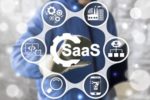Video Highlights: Challenges of Operationalizing ML
In the panel discussion below, the focus is on the main challenges of building and deploying ML applications. The discussion includes common pitfalls, development best practices, and the latest trends in tooling to effectively operationalize. The presentation comes from apply(): …
Video Highlights: Challenges of Operationalizing ML Read more »







